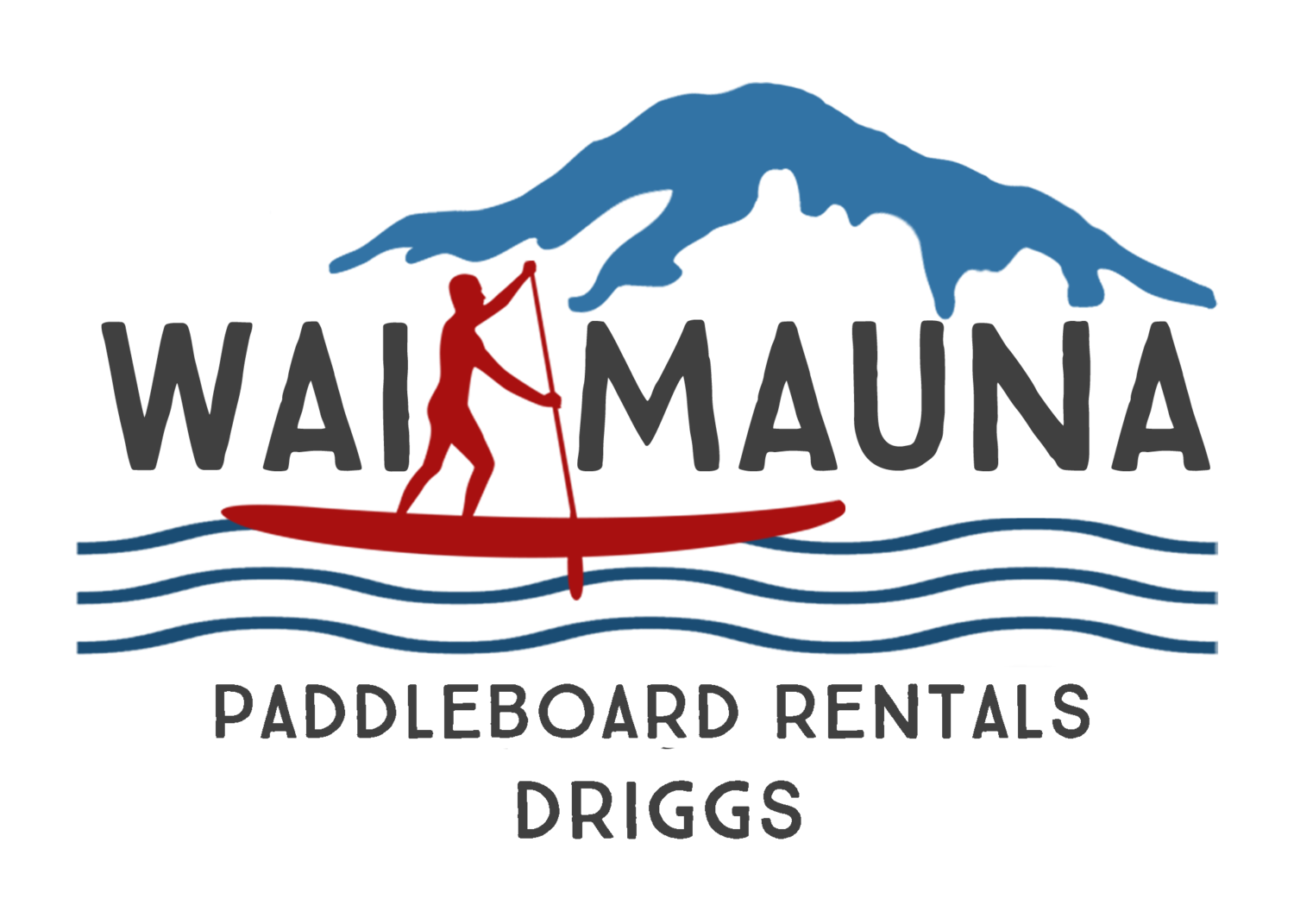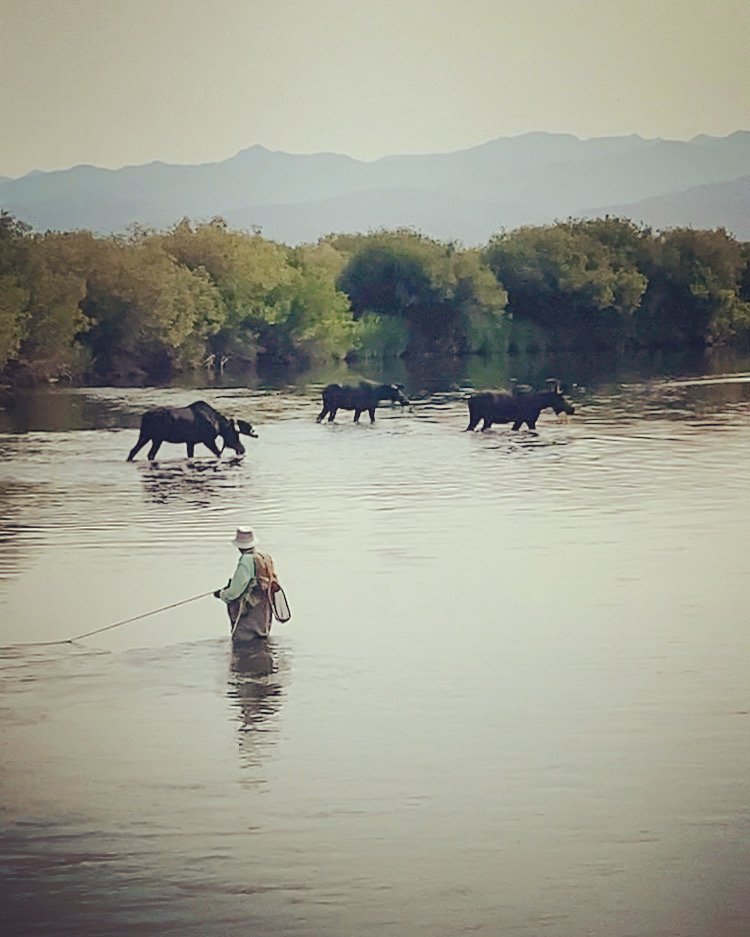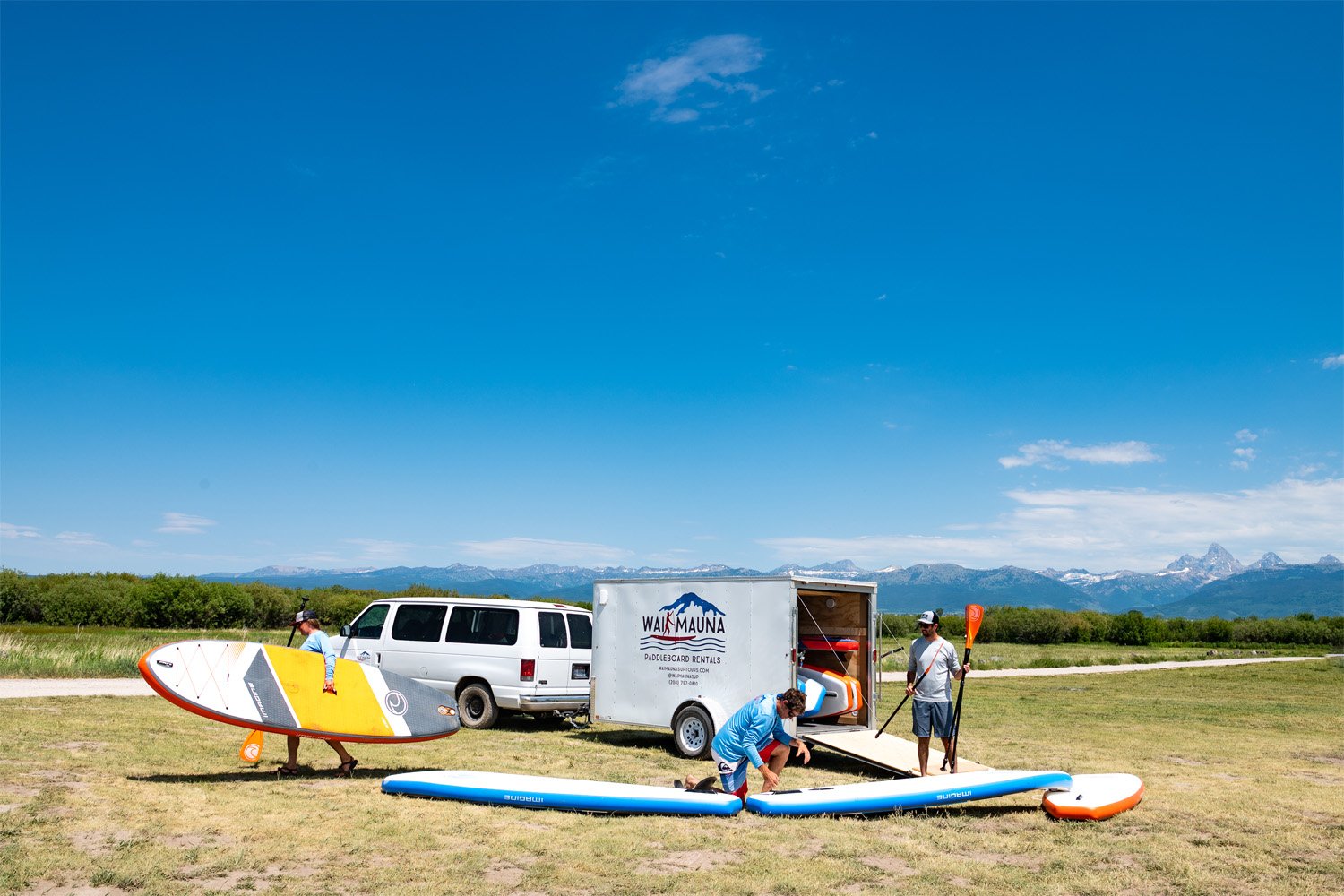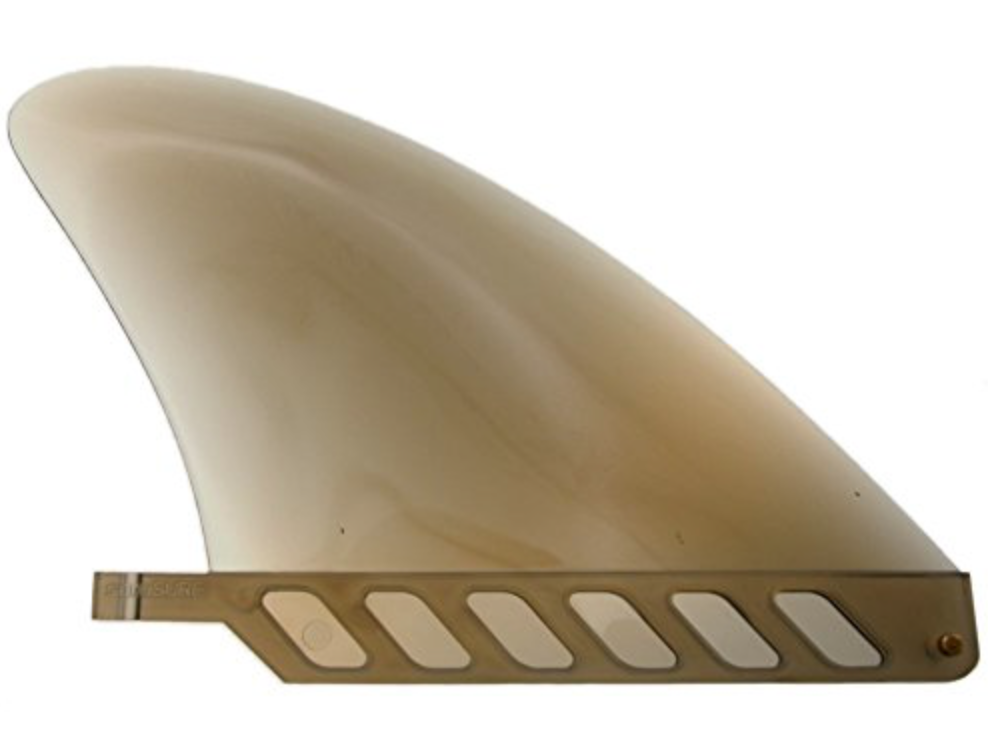Teton River Paddleboard Etiquette
There’s no denying it—paddleboarding on the Teton River has exploded in popularity.
Considering the Teton’s exceptional beauty and calm, gently-flowing waters, it’s little surprise that groups of paddleboarders are finding their way to Driggs.
That said, there are varying degrees of enthusiasm regarding this increased use.
Fishermen deal with larger amounts of traffic when trying to cast out a fly, and there’s a concerning uptick in confrontations between livestock, wildlife, and dogs.
More people means more trash and a greater strain on the resource, and congestion at the ramps (not to mention parking) can at times seem unsustainable.
The good news, thankfully, is that everyone can agree the Teton River is truly a special place, and a responsible recreation plan is imperative for ensuring the long-term health of this natural, free-flowing treasure.
With that in mind, If you’re planning to paddleboard the Teton River, here are some paddleboard etiquette tips that will not only help to minimize your impact and alleviate congestion, but contribute towards a sense of shared community, since this is everyone’s river to enjoy.
1: Give moose (and fishermen) plenty of space
It’s something—unfortunately—we see all the time: groups of paddlers cruising right through where a fisherman is trying to cast.
Fishermen have been here way longer than paddleboarders, so in a nod of respect to our Teton Valley anglers, make your best effort to paddle behind them, give space, and float by in silence.
That same etiquette, strangely enough, also goes for moose.
Idaho is home to more than 10,000 moose (though populations are on the decline), and the Teton River’s willow-lined floodplain is exactly the type of riparian habitat where these magnificent creatures thrive.
Moose here are the REAL river locals, and they deserve a lot of respect and space—especially a mother and her calf.
If you DO encounter a moose on the river (we’d say there’s a 70% chance that you will…), try to keep 50 feet of space and pull your paddleboard off to the side until they’ve moseyed off into the willows.
Need more tips? Check out this article on Moose Safety For Hikers.
2: Keep the ramp clear for trailers and boats, and arrive “ready at the ramp”
Guess what? Boat ramps are slippery! And that’s reason enough to avoid them…
On a real note though, we often see people leaving their boards just laying out on the ramp.
Sure—It might’ve been empty when you placed them there, but the very next minute a truck could pull up and want to back down their trailer.
As a general courtesy to drift boaters, rafters, or anyone backing a trailer, avoid putting your board on the ramp and instead move it off to the side where it won’t be in the way.
The second part—arrive “ready at the ramp”—means only approaching the shoreline or ramp when you’re ready to actively launch.
With the advent of iSUPs (inflatable paddleboards), we see dozens of people clogging up the ramp area while pumping up their boards.
This creates a backlog of river users and contributes to general crowding, and forces paddlers to launch from sensitive river banks (more on that below…)
The better solution? Arrive inflated and “ready at the ramp” by either inflating your board at home or next to your car in the parking lot.
3: Launch from designated gravel areas — not the sensitive river bank
This past winter, Friends of the Teton River completed a restoration project at Buxton River Park that not only created a gravel ramp for paddleboards,, kayaks, and canoes, but also put down willow plantings to help with erosion and improve native trout habitat.
The Teton River is one of the last strongholds of Yellowstone Cutthroat Trout, a native—and threatened— species of trout, whose historical range has precipitously dropped to a third of what it once was.
When you come to paddleboard the Teton River, do your part in protecting their habitat by gently launching from the designated spots and staying off of the banks.
4: Keep dogs on your board, and off of the banks.
We know, we know…you love your dog. It’s another member of the family.
But here’s the hard truth about dogs on the Teton: They’re becoming a bit of a problem.
Much of the land bordering the Teton River is actively used for cattle ranching, and encounters between cattle and off-leash dogs have become a point of contention.
There have also been instances of aggressive encounters between dogs, paddlers, and moose, as the moose are often threatened by dogs, since they can look like a predator: wolves.
Lastly, off-leash dogs have a tendency to trample and uproot the native trout habitat, and a barking dog that’s off chasing wildlife tends to detract from the overall peace.
We know this is a stance that might be unpopular (since paddling with your dog is FUN!), but our stance is we don’t condone dogs on the river, and if you DO choose to bring your dog on a paddle, make your best effort to keep it on your board and away from area wildlife.
5: Follow PFD and Invasive Species laws
By Idaho law, all paddleboarders age 14 and under are required to wear an inherently buoyant, traditional style of life jacket. For paddlers over 14 years old, it’s still mandatory to have a life jacket either affixed to your body or the vessel.
If you forgot your life jacket (or didn't know you needed one), there are life jacket loaner stations conveniently located at various boat ramps and put-ins.
For anyone renting a paddleboard in Driggs from Wai Mauna Paddleboard Rentals, we offer belt pack style life jackets which are Coast Guard approved and WAY more comfortable than traditional, standard use life jackets.
Also, anyone with an inflatable board over 10 feet in length (or any length of hard paddleboard), is required to purchase an Idaho Invasive Species Sticker which helps fund programs to keep invasive species (like quagga mussels) out of Idaho waterways..
Need a sticker? You can buy one online. It’s easy and the right thing to do!
6: Carpool or use a shuttle service to reduce congestion at access points
You know those days you pull up to the river and the place seems totally packed?
Here’s the weird thing about the the Teton River and the perceived level of crowding:
While the parking lots at Bates, Big Eddy, and Cache can often get really full, once you get out on to the river you realize there aren’t actually THAT many people.
But how is that possible when the parking lot overflow was spilling out on to the road?
The problem lies in “setting shuttle,” where a group of two paddlers will use two vehicles, placing one at the point where they’ll start the paddle, and another at the point where they’ll finish.
To be fair, two people using two vehicles isn’t that big of a deal, but when it turns into four people using four vehicles, or eight people use six, the lots can tend to fill up quickly and it just isn’t very efficient.
What’s more, you’ll also see crowds around the boat ramp, since they’re waiting 20-30 minutes for their friends to go park the other car.
You can avoid all that hassle and alleviate congestion with a Teton River Shuttle service, which we offer for only $15/person, with a group max of $60.
What we’ll usually do is meet you at the takeout where you plan to finish your trip, and then load your boards or kayaks in our trailer and shuttle you up to the put-in.
It simply helps save you time that’s wasted by waiting around at the ramp, and reduces the number of cars at the lots—it’s a win/win all around.
7: Leave the river cleaner than you found it (and remember to pack out your trash)
If every paddleboarder picked up one piece of trash every time they were out on the river, the Teton River would be completely free of trash, which is just the way we want it!
To be fair, very few people leave litter on purpose, and instead what happens is a bottle or can may accidentally slip off your board. Hair ties and sunglasses may fall off and sink, or food packaging when you’re out there with the kids might blow away in the wind.
To make sure you leave no trace on the water, check to make sure your cooler or dry bag is firmly attached to your board, and take care with loose items to make sure they don’t take an accidental swim or go under.
8: Use the correct fin to avoid scraping the river bottom
Did you scrape your fin on the river bottom the last time you paddled the Teton? Did you get to points where it was simply so shallow you needed to get out and walk?
River levels are at all-time lows, and even in normal years the late summer river depth is just 1.5 - 2 feet.
While that’s deep enough for traditional fins (which are 9” long, come with most boards, and are suited for oceans and lakes), there are dozens of gravel bars and shallow areas where the water is inches deep.
Because the river is simply so shallow, we outfit our board with 4” fins that are flexible, rubber, won’t break off, and allow you to paddle in shallow water without scraping along the bottom.
We sell the fins for just $20 plus shipping (free deliver in Teton Valley!), and recommend everyone use shorter fins to not only keep you from falling off the board (which can happen when your fin hits a rock), but help with reducing sedimentation that’s caused by scraping along the bottom. We’ve also plucked multiple fins out of the river that were broken or snapped off of boards, so do your part in reducing rubbish, and you’ll also have a better experience!
9: Give back to the resource and be a good steward—it’s everyone’s to protect
Finally, there are A LOT of heroic volunteers and stewards who are doing great things to protect the watershed and keep the Teton so beautiful. Local non-profit, Friends of the Teton River, is one of those organizations, and Wai Mauna is proud to donate $1 for each paddler we put on the water.
How are some ways you can get involved? Check out their website and Facebook page for upcoming cleanups or float trips, and attend one of the info sessions where you can not only learn about the river itself, but ways that water is truly the life blood that Teton Valley relies on.
Appreciate the tips? Share and pass them on!
Paddleboarding the Teton River is a privilege we’ve all been given, and it’s ours to protect and ensure that this resource not only survives—but keeps thriving.












